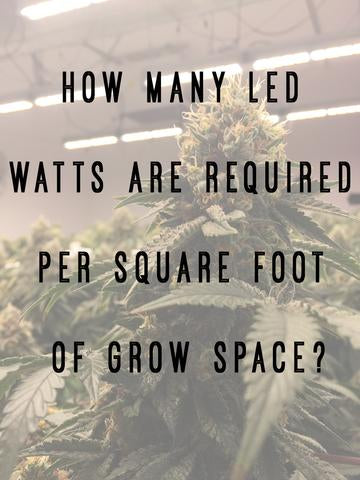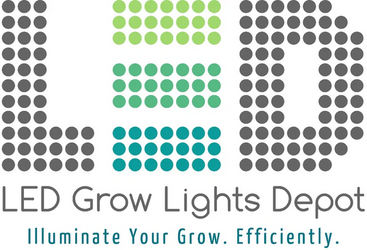Free Shipping in the USA on nearly all items!
Limited phone hours during the Holidays! Call us: 888-611-9305
Free Shipping in the USA on nearly ALL items! Limited phone hours during the Holidays!
We score 4.8 out of 5 based on 5742 reviews. Browse Reviews.

Are you new to the world of LED growing? If so, the charts below will help you determine how much energy (by wattage) your plants require for flowering.
Disclaimer: Wattage is a relic of the HID (MH and HPS) days. Wattage should not be used to determine the coverage area a fixture or the usefulness of an LED grow light. Wattage should only be used as a simple method for approximating the correct fixture size for your grow.
PPFD (umol/j/m2) and DLI is the correct metric for measuring useful light intensity over a given area. Coupled with the correct spectrum for your plant type and phase of growth, PPFD (and spectrum) are the keys to a successful grow. However, for the purpose of estimation, we will report wattage calculations in this article.
>>> GET A FREE BUYER'S GUIDE CHECKLIST <<<
It is important to understand that the number of actual watts that you need for your grow will vary depending on:
The average LED grow light draws about 40 watts to cover 1 sq ft for flowering. HID lights draw about 62.5 watts per sq ft. The energy saving that growers can expect from using LED grow lights instead of HID is around 38%. This energy savings only takes into account to savings growers gain when using LEDs fixtures. It does not account for other environmental factors where growers can save energy. For example, less ventilation and air conditioning may be used, or foregone completely, depending on the size of the setup and ambient temperatures. Total power savings may rise above 50% in certain scenarios.)
Different LED grow lights will have different efficiencies. More efficient LED grow lights will use fewer watts to emit the same amount of light that a less efficient LED grow light will emit. Therefore, wattage is not the most accurate tool to know how powerful of a grow light you need for a particular coverage area.
The wattages listed below assume you are flowering your plants. If vegging, you might consider reducing your wattage by 50% since vegging plants only require about half the light intensity. As always, it is best practice to follow the manufacturer's recommendations.
In each chart you will find the following columns:
Assume about 32 watts/sq ft (actual LED wattage) for flowering. Fewer watts might equate to smaller yields while more wattage may lead to larger yields.
| # of Plants | Square Feet | Wattage from Wall |
| 1 | 1 | 40 watts |
| 2 | 2 | 80 watts |
| 4 | 4 | 160 watts |
| 6 | 6 | 240 watts |
| 8 | 8 | 320 watts |
| 10 | 10 | 400 watts |
| # of Plants | Square Feet | Wattage from Wall |
| 1 | 2 | 80 watts |
| 2 | 4 | 160 watts |
| 4 | 8 | 320 watts |
| 6 | 12 | 480 watts |
| 8 | 16 | 640 watts |
| 10 | 20 | 800 watts |
| # of Plants | Square Feet | Wattage from Wall |
| 1 | 4 | 160 watts |
| 2 | 8 | 320 watts |
| 4 | 16 | 640 watts |
| 6 | 24 | 960 watts |
| 8 | 32 | 1280 watts |
| 10 | 40 | 1600 watts |
Related: Best LED Grow Lights 2022
Notes: Please be aware that the cultivation of certain plants may or may not be legal within your own specific region or country. LED Grow Lights Depot does not encourage or condone any illegal activity and advises each individual / user to inform themselves of the relevant laws within their own region/country.
{"one"=>"Select 2 or 3 items to compare", "other"=>"{{ count }} of 3 items selected"}


Comments
Leave a comment